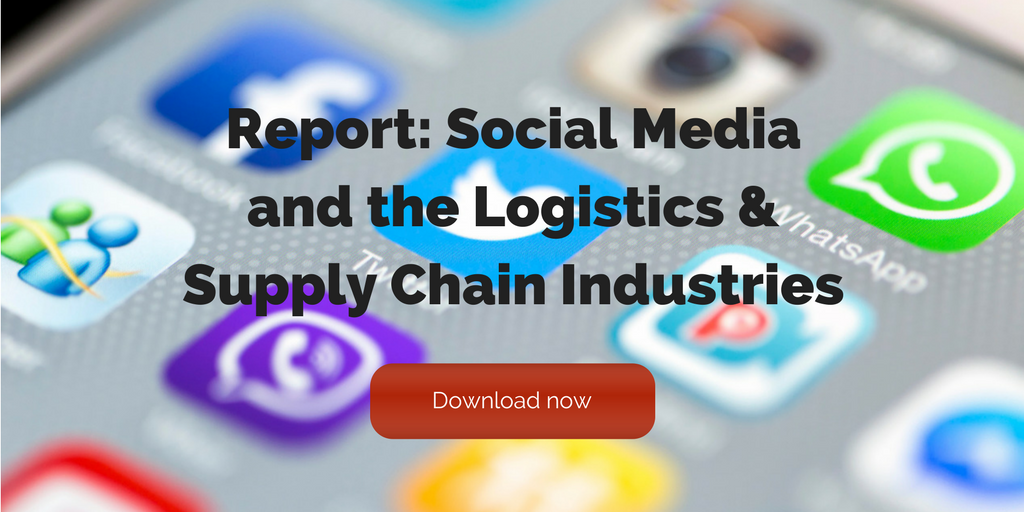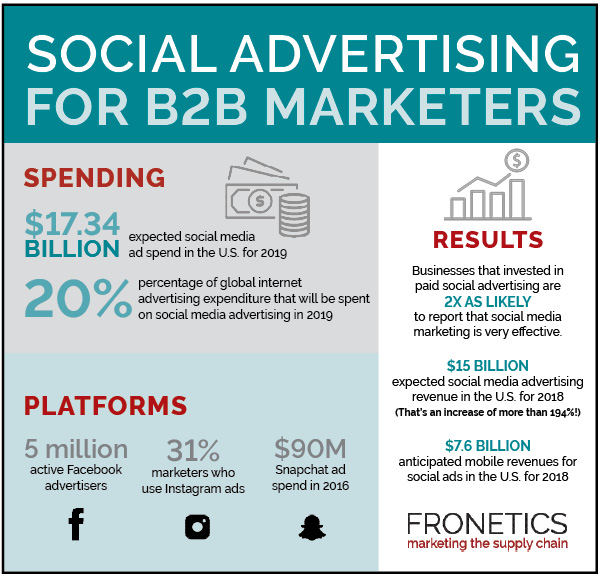
by Fronetics | Oct 23, 2018 | Blog, Content Marketing, Logistics, Marketing, Social Media, Supply Chain
As social networks reaffirm their commitment to keeping their platforms truly social, brands need to evaluate their social media marketing strategies and ensure that they align with what users want to see.
This year, we’ve seen social networks attempt to take back the “social” element of their platforms by decreasing the reach of brands and businesses (think Facebook News Feed changes). We’ve thus seen a decline across the board in social media reach.
The 2018 Sprout Social Index shows that people are still using social media primarily for connecting with friends and family. As brands put together campaigns and messaging, they must remember that they are “guests at dinner, not members of the nuclear family: their role in user feeds is delicate, valuable, and to be treated with great care.”
[bctt tweet=”The task for brands is to carry out the necessary disruption of the user experience in the most relevant, and least disruptive way.” username=”Fronetics”]
The task for brands is to carry out the necessary disruption of the user experience in the most relevant, and least disruptive way. Sprout Social’s data gives a clear answer: awareness and consideration stage content. This means thinking long-term and prioritizing relationships, not quick fixes and attribution.
Give the people what they want
As part of its 2018 Index, Sprout Social researched the types of content that users prefer to see from brands on social media. 30% of users expressed a preference for links to more information, while 18% prefer graphics/images, 17% want produced video, 11% value text/conversations, and 7% said produced/edited photos.
The obvious answer for brands is to cater to the expressed wishes of the public. Building lasting relationships with prospects on social media means presenting your brand in a visually engaging way while linking them to useful and relevant information. Furthermore, it means placing focus and resources on authentic engagement. “This is the content that consumers, who use social primarily to interact with friends and family, are most interested in from brands,” reports Sprout Social.
Redefining success
Marketers naturally place a premium on ROI, though measuring social media ROI remains difficult. In fact, 55% of social marketers reported it as their biggest challenge. Conventional wisdom when it comes to ROI for social media has focused on direct attribution to sales. But according to Sprout Social, “that model doesn’t actually reflect where social marketers are focused.” In fact, 80% report increasing brand awareness as their primary social media goal, and just as many point to increasing engagement across their social channels.
A meager 14% of marketers report being able to quantify the revenue from social media. This is a problem — one that’s caused by looking at social media primarily as it relates to sales. According to Sprout Social, this “breeds an overly microscopic perspective.”
It’s time for social marketers to redefine ROI, and put an end to wasted time and resources on content and campaigns that don’t resonate. Realigning priorities from sales to what users actually want to see on social media is key to cultivating strong, lasting relationships with prospects, and being a helpful rather than invasive presence online.
Related posts:


by Fronetics | Jul 2, 2018 | Blog, Content Marketing, Logistics, Marketing, Social Media, Supply Chain
The growth of social messaging platforms is a big opportunity for your business to reach your audience with targeted content.
Gone are the days when social messaging platforms are just about chatting or making plans with family and friends. You might be surprised to learn that “the combined total monthly active user count of the top 4 messaging apps has grown to 4.1 billion in 2018.”
[bctt tweet=”You might be surprised, according to Business Insider, “the combined total monthly active user count of the top 4 messaging apps has grown to 4.1 billion in 2018.”” username=”Fronetics”]
Just to put that in perspective, that’s well over half of the world’s population and — perhaps even more strikingly — dwarfs the 2.19 billion monthly active users that Facebook reported in the first quarter of 2018.
It’s official: Social messaging platforms have surpassed “traditional” social media when it comes to active users. Not only that, marketers are taking notice, and beginning to think about how to leverage messaging platforms to deliver content to target audiences.
Conversational content
As you might expect, a key element of successfully using social messaging platforms is to tell your story conversationally. This means tailoring your content to the specific wants or needs of your target audience, creating a compelling narrative with your content, rather than an overt sales pitch.
This kind of storytelling is fundamental to content marketing.
“Messaging and chatbots represent the next logical extension of the content marketing mission,” writes Chris Frascella of the Content Marketing Institute.
According to Thomas Husson of Forbes, “Messaging apps will introduce a paradigm shift for marketers where interactive and contextual conversations will replace ad broadcasting. New conversational interfaces will drive deeper relationships between consumers and brands.”
You may be thinking that this is all well and good for B2C marketing, but how does it apply to B2B marketing? But the truth is, if you have a content marketing strategy in place, chances are, you have a story to tell, and these are tools to help you do it.
Chatbots
Enter chatbots, the technology to turn your content into conversations. Chances are, you’ve already come face-to-screen with a chatbot and may not have even known it.
These computer programs simulate human conversation using auditory or textual methods. Basically, it’s software that communicates with your target audience inside a messaging app. Chatbots are already changing the way businesses interact with their customers — and with each other.
If you’re thinking that you’re about to be replaced by a robot, relax. We’re extremely far from AI technology replacing human interaction. Chatbots are a tool, and they need to be fed content and trained by human marketing professionals.
Tips for using chatbots
The first step is adapting your content for use in a chatbot conversation. “You can’t just duplicate existing content in your conversational scripts,” says Frascella. While the goals for your content are the same, the way it is delivered is different. That requires a shift in how it’s structured.
It’s also important to be mindful of timing. Because chatbots require users to opt into conversations, retaining permission to access your audience in this way depends largely on content and timing. This means delivering engaging, meaningful, and valuable content at regular intervals, but not intrusively.
For more ideas on creating a chatbot, check out this post.
Social messaging platforms are opening new doors for you to deliver personalized content straight to your target buyers. Make the most of this opportunity!
Related posts:


by Fronetics | Jun 7, 2018 | Blog, Content Marketing, Logistics, Marketing, Social Media, Supply Chain
Supply chain and logistics marketers need to incorporate social advertising into their content market strategy (and budget) to stay on top of marketing’s biggest driver.
The way audiences use social media channels is constantly changing. As marketers, we need to make sure we’re adapting to these changes. One of the biggest changes we’ve seen so far in 2018 is the increased use of social advertising.
Social advertising is a paid form of paid digital advertising on social media platforms. For example, the advertising platforms provided by Google, Twitter, and Facebook involve “targeting and presenting ads based on relationships articulated on those same services.” Oftentimes, social advertising is one part of a larger marketing strategy.
Sounds easy enough to implement, right? Well, there are so many options and so many more users. If you’re taking the time and money to invest in social advertising, you need to ensure that you’re using the right platforms and getting in front of your target audiences.
[bctt tweet=”With over 3.5 billion internet users worldwide, it’s easy to see the reach ads on social media platforms can have. Facebook alone has over 2 billion daily active users. 2 billion! ” username=”Fronetics”]
In Social Media Examiner’s new report, it’s hard to dispute that social advertising is anything but powerful. With over 3.5 billion internet users worldwide, it’s easy to see the reach ads on social media platforms can have. Facebook alone has over 2 billion daily active users. 2 billion! That’s a lot of opportunities for distributing your content and gaining new followers.
Here are some powerful statistics to prove the weight of social advertising and why it’s worth your time and pennies.
Infographic: A look at social advertising for B2B marketers

(Made with Canva)
Key takeaway
For the first time in years, Social Media Examiner’s report revealed that marketers are more focused on lead generation than cultivating a loyal fan base. What does this mean for you? The focus has shifted from engagement to metrics and automation.
As marketers, we need to watch for increased use of chatbots and other marketing automation tools that can help supply chain marketers become more efficient and more successful in earning and converting leads.
Related posts:

SaveSave
SaveSave

by Fronetics | Sep 11, 2017 | Blog, Content Marketing, Marketing, Social Media, Strategy
Social prospecting can help logistics and supply chain companies identify and engage with leads on social media in a genuine — and highly effective — way.
Social media should be an integral part of your marketing strategy. You know it helps build brand awareness, gather market intelligence, discover customer problems, and influence purchasing decisions. But your lead generation efforts should also include the use of social platforms. It’s a practice called social prospecting, which can be highly effective in identifying new prospects.
What is social prospecting?
With more than 2 billion monthly active users on Facebook and over 328 million monthly active users on Twitter, smart marketers know there’s more potential than ever to use social platforms to get their name out there, spread their content, and draw more people to their site. Hey, it’s your job to make people aware of what your company can offer, right? Right.
That’s where social prospecting comes in. It involves scouring the social web, identifying potential prospects for your business, engaging them with content, and getting those potential prospects to your sales team. “Social prospecting is the art of listening to people, not mentions or keywords,” writes Maggie Hibma for HubSpot.
Social media isn’t just for recreational purposes anymore. More than half (53%) of B2B buyers report using social media to research purchases, in fact. Social prospecting allows you to be proactive in finding all of the considerable number of social-media-using prospects who are looking for you, too.
But as with any initiative, social prospecting requires commitment. In order to find new leads, social prospecting needs to become a part of your daily routine. The end results will be quality leads that are already committed to your brand because of the connection you have created through social channels.
Creating positive impressions
The secret behind successful social prospecting is creating and distributing content that shows that you and your company genuinely care about your clients and prospects. It’s about ditching the ‘sales’ game and working to establish your brand as an industry leader that has a connection to your community and a lot of valuable insight to share.
Make your content about your target consumers: What do they need to know, struggle with, or want to learn more about? By distributing this content across social channels to foster sharing, conversation and engagement, you’ll gain influence with your audience (and their networks) and make a positive impression.
Prospecting vs. spamming
The definition of spam is “indiscriminately.” It means “in a random manner” or “in a way that does not show care or judgment.” This is the opposite of how social prospecting should work. The connection that you create with your prospects should be anything but random.
Think about the number of possible prospects on social media right now. Facebook just topped 2 billion active users monthly, and Instagram is pulling in over 250 million daily active users. These massive numbers scream opportunity — but only if you are putting your time and effort into the right people, on the right channels, at the right time.
Sounds complicated? It doesn’t have to be. If you already have a social media presence, that’s step one.
Fronetics’ recently updated Social Prospecting Workbook guides you through using social listening to generate new leads for your business. We’ve identified the quickest way to find potential customers on Twitter, Facebook, LinkedIn, Pinterest, and Google+. Every worksheet includes:
- Short preparatory work to make the actual prospecting easy
- Visual instructions on how and where to find prospects
- Pro tips that will help you get the best results
- Prescriptions (Marketing Rx) for success
- Take-home exercises for follow-up prospecting
Download it now, and let us know what you think!

Related posts:

by Fronetics | Mar 7, 2017 | Blog, Logistics, Marketing, Social Media, Supply Chain
Social listening can help your business gain valuable insight about prospects, monitor your competitors, turn around negative conversations about your company, and earn social influencers.
Every day, conversations are taking place about your company, your products and services, your industry, and your competitors. These conversations are not just happening over the water cooler: They are happening on social media.
These conversations not only provide invaluable (and often strategic) information, they also serve to shape and define your company and your brand. With the advent of social media, the reality is that is the customer who drives your company’s image and brand message. If your company isn’t on social media, you miss out.
Social listening — 4 key benefits
Social listening, or social monitoring, is the process of monitoring social media to identify and assess what is being said about a company, individual, brand, product, or service. Through social listening, your company can gain market intelligence. You learn how your company, products, and services are being perceived. Knowing this information in real time is invaluable.
Here are 4 ways social listening can benefit your business and help you grow revenue.
1. Gain valuable prospect insight
Social media can be an incredible tool for getting to know your leads. Think about it: Social networks possess massive amounts of self-qualified, real-time data about billions of people. Consider the astonishing number of monthly active users on each platform:
- Facebook: 1.86 billion
- LinkedIn: 467 million
- Twitter: 319 million
- Instagram: 600 million
That’s a lot of potential customers. Now think about all of the details users provide on their social profiles and the kinds of things they post about: their preferences, where they live and work, and how they feel about different companies and brands, to name a few. Social listening lets you mine this information to learn about your prospects and customers.
2. Stay ahead of the competition
Social listening allows you to access valuable information about your competitors. You can see what customers are saying about your industry peers and make strategic decisions based on this knowledge. Using programs like Hootsuite, you can monitor keywords and your competitors’ brands and products. Based on your findings, you can make critical changes or create content to increase your brand awareness.
3. Create tone awareness
You know customers are talking about your company, but is the tone a positive one? And if it’s not, how are you responding? Social listening gives you the opportunity to take a negative customer-service situation and not only correct the problem, but improve the customer relationship. By having a personal response to negative comments on social media, your company shows a genuine concern for its customers and an investment in customer satisfaction.
4. Earn key influencers
People value the reviews of their peers over claims from a corporation. In fact, 93% of millennials have made a purchase based on a recommendation from friends and family, and 89% of millennials trust these recommendations more than they do the claims of the brand itself. Hence the rise of the influencer marketing.
Social media influencers are people that encourage others to work with your business through social networking. According to Sprout Social, “Social media managers prize their social media influencers because they drive engagement, discussions and word of mouth for your brand.” Real people talking about their experiences with your products and services helps foster trust in new customers.
Using social intelligence
To reap the benefits of social listening, including increasing your revenue, you need to use the information and intelligence gathered. For example, if you learn via social media that your customers are experiencing issues with a specific product, take steps to determine what the issues are, and then make the appropriate changes.
The Aberdeen Group offers additional examples of how businesses have and can use social listening: “Companies can use the voice of the customer to make critical adjustments and find issues related to inventory allocation, order management, returns management, cost, overall service satisfaction and beyond.”
The opportunities the supply chain and logistics industries can realize through social listening are great. Not participating in social listening results in missed opportunities.
Related posts:










